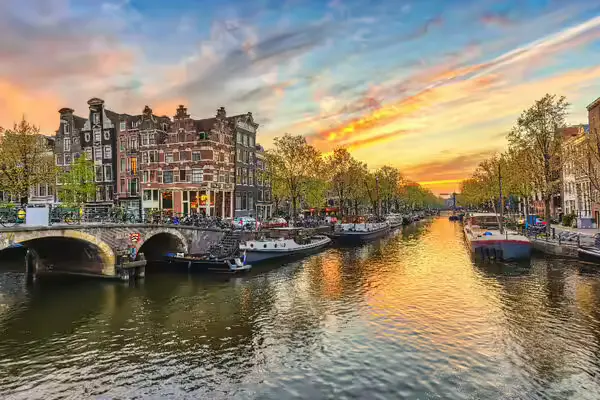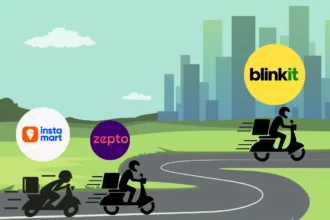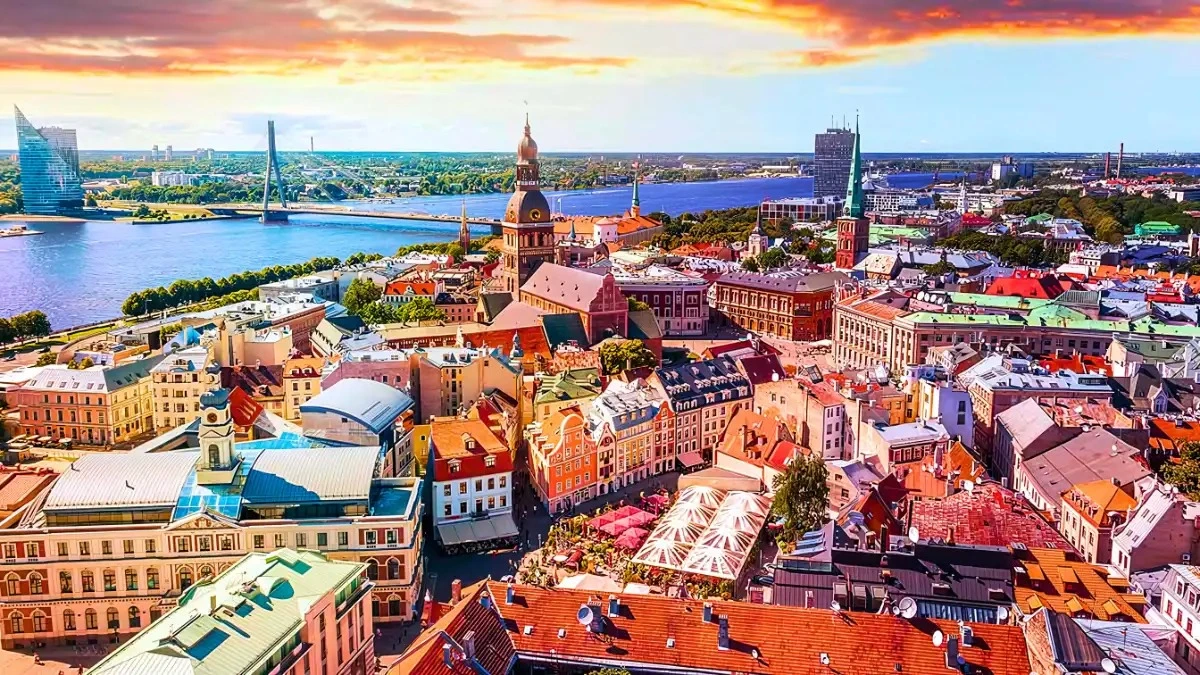Estimated Reading Time: 18-20 minutes ( 4110 words)
Introduction
Europe continues to be a dream destination for travellers across the globe — a continent where every corner tells a story. From the romantic canals of Venice and the cobbled streets of Prague to the snow-capped Alps and the artistic lanes of Paris, Europe offers an unmatched blend of culture, cuisine, and charm. For many Indian travellers, though, this dream often hits a practical roadblock: the cost. Flights, Schengen visas, intra-Europe transport, accommodation, food, and ever-fluctuating exchange rates (₹90–₹92 per Euro in 2025) can easily push a standard two-week trip above ₹2–3 Lakh.
Yet, travel habits are changing. The rise of budget airlines like Wizz Air and Ryanair, affordable hostels and Airbnb rooms, group bus tours, and low-cost rail passes have made Europe more accessible than ever. Indian travellers, in particular, are mastering the art of “smart spending” — leveraging flight deals from Delhi, Mumbai, and Kochi, using digital nomad-style planning tools, and relying on local experiences over luxury stays. According to Skyscanner’s 2025 India Travel Trends Report, budget-conscious Indian travellers are now 3× more likely to book multi-country European trips with flexible itineraries and shared accommodations than they were in 2018.
This blog aims to prove one powerful point: a European vacation doesn’t have to drain your savings. With strategic planning, early bookings, city selection, and on-ground budget hacks, you can craft a rich travel experience — all within ₹1 Lakh. Whether you’re a first-time solo explorer, a couple planning a short getaway, or a content creator looking to turn travel into monetized storytelling, this guide will provide data-backed insights, sample itineraries, and actionable hacks to make it happen.By the end of this post, you’ll have a step-by-step roadmap to design your own low-cost Europe trip — from flight deals and visa savings to stay options and local travel passes. Even better, you’ll learn how to turn your trip research into blog or affiliate content, so your journey not only fits your budget but also supports your long-term income goals as a travel creator.
Why “Under ₹1 Lakh” Is Possible (and What to Watch)
For decades, a Europe trip from India was considered a luxury reserved for the elite or honeymooners. But today, the landscape is changing fast. Thanks to digital booking tools, low-cost airlines, hostel culture, and new-age travel planning platforms, exploring Europe under ₹1 Lakh is not just a fantasy — it’s a realistic goal with the right approach. Still, the dream comes with trade-offs and careful planning, which we’ll unpack below.

2.1 Current Cost Snapshot (What a Trip Really Costs in 2025)
According to Visa2Fly, CityBit Travel, and Antriksh Travel’s 2024–2025 reports, the average India-to-Europe budget breakdown is as follows:
| Expense Category | Average Budget Range (₹) | Tips to Save |
| Round-trip Flights (India → Europe) | ₹40,000 – ₹65,000 | Book 3–5 months early; use flight trackers like Skyscanner or Google Flights; look for deals from Kochi, Delhi, or Mumbai. |
| Accommodation (Hostels / Budget Hotels) | ₹1,500 – ₹2,500 per night (Hostels); ₹3,000 – ₹5,000 (Budget Hotels) | Stay in mixed dorms or small-town hostels; use Hostelworld, Couchsurfing, or Booking.com filters for “budget + breakfast included.” |
| Daily Meals (Street Food + Groceries) | ₹800 – ₹1,500 per day | Eat local, cook occasionally in hostels, use grocery stores like Lidl, Spar, or Carrefour. |
| Local Transport (Trains, Buses, Metro) | ₹600 – ₹1,000 per day | Use multi-day passes, FlixBus, or BlaBlaCar rideshares instead of taxis. |
| Visa & Insurance | ₹9,000 – ₹12,000 | Apply early; compare Schengen insurance providers. |
| Miscellaneous / Sightseeing / SIM Card | ₹3,000 – ₹5,000 | Prioritize free walking tours, city museum passes, and prepaid SIMs. |
In total, a 10–12 day Europe trip can be pulled off under ₹1 Lakh by combining budget flights, hostels, and minimal paid attractions. As CityBit Travel (2024) notes, “It is possible — but challenging — to plan a Europe trip under ₹1 Lakh from India. Flexibility and compromise are key.”
2.2 Key Cost Drivers (What Eats Your Budget)
Understanding what inflates your travel cost is crucial before diving into planning. Here’s what typically blows up an otherwise affordable trip:
1. Exchange Rate Risk
The Euro-to-Rupee exchange rate is one of the biggest variables. As of October 2025, 1 EUR ≈ ₹91. A few years ago, it hovered around ₹78–₹80. According to The Economic Times (2025), the rising Euro makes European trips around 15–20% costlier for Indians.
💡 Tip: Preload a Forex travel card when the rate dips, and avoid airport currency exchanges, which add extra 3–5% markup.
2. Flight Timing & Route
Airfare can make or break your budget. Peak-season (May–August, Christmas) fares can shoot up to ₹80,000–₹1.2 Lakh. To stay within budget, travel during shoulder seasons (March–April or September–October). Book flights 3–5 months ahead and use budget carriers like Wizz Air, Ryanair, or LOT Polish Airlines, often connecting via Eastern Europe hubs (Budapest, Warsaw, Prague) instead of Western ones.
3. Destination Choice
Not all of Europe is priced equally. Western Europe (France, Italy, Germany, Scandinavia) is beautiful — but pricey. In contrast, Eastern and Southern Europe — think Hungary, Poland, Czech Republic, Croatia, Portugal, or Greece — can slash your cost by up to 40–50% while offering equally rich experiences.
📍 Example: A night in Paris can cost ₹8,000–₹10,000, while a night in Budapest or Krakow may cost under ₹2,000 with better hostel amenities.
4. Accommodation & Local Transport
Centrally located hotels and first-class trains are the fastest budget killers. Instead, choose hostels near metro stations, use FlixBus or Interrail youth passes, and opt for night buses to save both time and money.
5. Miscellaneous & Shopping
These small extras — Schengen visa fees, insurance, souvenirs, and city taxes — can easily add up to ₹10,000–₹15,000. Create a buffer fund of 5–10% of your budget to handle them comfortably.
⚠️ Warning & Reality Check:
Planning a Europe trip under ₹1 Lakh requires smart trade-offs. You’ll likely visit fewer countries, skip a few luxuries, and travel light — but the experience will still be unforgettable. As India’s outbound tourism continues to rise (up 60% YoY in 2024 per UNWTO & Tourism Economics), budget travel content and itineraries in this niche have strong potential — both for real travellers and for content creators monetizing travel blogs and YouTube channels.
Step-by-Step Budget Travel Hacks
Planning a European vacation under ₹1 Lakh might sound ambitious — but with the right combination of strategy, flexibility, and tech tools, it’s achievable. Below is a step-by-step guide to help you minimize costs on flights, stays, transport, food, and sightseeing — without compromising the experience.
3.1 Flights from India — Save Big with Smart Bookings ✈️
Airfare is the largest single cost of any Europe trip from India, often accounting for 40–50% of your total budget. The goal: bring that ₹65,000 bill down to ₹35,000–₹45,000 using data-driven planning.
Here’s how to do it:
- Book 4–6 months in advance. Most budget-friendly fares appear between 120–180 days before departure. Booking too close to your travel date can increase costs by up to 60%.
- Use meta-search tools like Skyscanner, Google Flights, and Momondo to compare across multiple airlines and set fare alerts. These platforms let you track price drops in real time.
- Be flexible with dates and airports. Prices can vary drastically by day — flying mid-week (Tuesday or Wednesday) often saves 10–15%.
- Try open-jaw tickets. Fly into one city (say, Budapest) and return from another (Prague or Warsaw) — it’s often cheaper than round-trip fares to a single hub.
- Accept longer layovers or 2-leg itineraries. Example: India → Istanbul → Krakow instead of a direct flight to Paris. The savings can be ₹10,000–₹15,000.
- Choose cheaper European entry points.
- Eastern European hubs like Warsaw, Athens, Budapest, or Prague usually have lower airport taxes.
- In 2025, sample routes such as Delhi–Frankfurt or Mumbai–Athens have been quoted at ₹33,000–₹36,000 round-trip (True Scoop, 2025).
- Eastern European hubs like Warsaw, Athens, Budapest, or Prague usually have lower airport taxes.
💡 Pro Tip: Subscribe to airline newsletters (IndiGo, Air India Express, LOT Polish, Wizz Air) for flash sales. Budget carriers often announce Europe deals valid for just 24–48 hours.
3.2 Choosing Cheaper Destinations & Off-Season Timing 🌍
Your destination choice can make or break your “under ₹1 Lakh” goal. Western Europe (France, Italy, Switzerland) is iconic but notoriously expensive — daily expenses can double compared to Central or Eastern Europe.
Here’s how to choose wisely:
- Focus on value destinations:
- Poland, Hungary, Romania, Bulgaria, and Czech Republic offer world-class history, architecture, and cuisine at nearly half the cost of France or Switzerland.
- For example, daily accommodation + meals in Budapest may cost ₹3,000–₹4,000 vs. ₹8,000–₹10,000 in Paris. (Airtel Travel Report, 2024)
- Poland, Hungary, Romania, Bulgaria, and Czech Republic offer world-class history, architecture, and cuisine at nearly half the cost of France or Switzerland.
- Travel off-season or during shoulder months (April–May, September–October).
You’ll save on flights, hotels, and crowd-related surcharges. - Use intra-Europe low-cost carriers (LCCs):
Airlines like Ryanair, Wizz Air, EasyJet, and Vueling offer short hops for as low as ₹1,500–₹5,000 if booked early. - Stay longer in fewer countries. Each border crossing adds hidden costs (transport, currency, SIM, etc.), so go deep, not wide.
💡 Smart Hack: Use Eurail or Omio to map city-to-city hops and compare flights, trains, and buses in one place.
3.3 Accommodation & Staying Smart 🏨
Accommodation is your second-biggest expense, but it’s also where creative travellers save the most.
Strategies that work:
- Hostels and dorms: Expect ₹1,500–₹3,000 per night in affordable cities like Krakow, Bratislava, or Bucharest. Use Hostelworld, Booking.com, or Couchsurfing for budget listings.
- Stay outside city centers:
Choose neighborhoods connected by metro or tram. A 20-minute commute can cut room costs by 40%. - Shared apartments / Airbnb:
Rent shared flats with kitchen access — cooking 2–3 meals a week saves ₹3,000–₹5,000 total. - Book flexible deals:
Opt for refundable or cancellable stays. If better offers appear, you can rebook without penalties.
💡 Case Example: A 10-night stay in hostels across Krakow, Budapest, and Prague can total ₹18,000–₹20,000 vs. ₹45,000+ in Western Europe.
3.4 Transport Within Europe 🚆🚌
Europe’s public transport system is one of the world’s best — and a huge opportunity for savings.
Budget Travel Options:
- Use city public transport passes. Daily metro/tram/bus passes cost ₹150–₹400 in cities like Budapest, Prague, or Warsaw (CityBit Travel, 2024).
- Inter-city travel:
- FlixBus offers routes between European cities for ₹1,500–₹3,000.
- Budget flights (Ryanair, EasyJet) are ideal for long hops, costing ₹1,500–₹5,000 if booked early (Reliance General Insurance Report, 2024).
- FlixBus offers routes between European cities for ₹1,500–₹3,000.
- Rail Passes:
Consider Eurail or Interrail only if you plan 5+ train rides; otherwise, book point-to-point tickets for better value. - Walk or cycle.
European cities like Amsterdam, Prague, and Vienna are extremely walkable. Renting a bicycle costs ₹300–₹600/day and offers scenic savings.
💡 Quick Tip: Download Moovit or Rome2Rio to compare real-time transport routes and ticket prices.
3.5 Food, Sightseeing & Miscellaneous 🍽️🎟️
Daily spending on food and activities can quietly erode your budget if not planned smartly.
Here’s how to stay within limit:
- Eat local and simple.
Street food, bakeries, and supermarket meals cost ₹800–₹1,500/day (CityBit Travel, 2024).
- Grab sandwiches from Lidl or Carrefour.
- Cook breakfast/dinner in hostel kitchens.
- Grab sandwiches from Lidl or Carrefour.
- Sightseeing for less:
- Join “free walking tours” (available in nearly every major European city).
- Check for free-entry days at museums and landmarks.
- Invest in city passes (e.g., Prague Card, Budapest Card) — often include free transit + major attractions at 30–40% savings.
- Join “free walking tours” (available in nearly every major European city).
- Visa & Insurance:
A Schengen Visa costs around ₹6,800 (plus processing). Basic travel insurance starts at ₹1,000–₹1,200 (Bajaj FinServ Markets, 2025). - Avoid heavy shopping.
Limit souvenirs to small keepsakes — your rupee stretches better in experiences than in retail. - Smart currency management:
Use travel forex cards or apps like Niyo Global or Wise, which offer zero foreign transaction fees.
Preload when INR/EUR rate is favorable (around ₹89–₹90).
💡 Expert Tip: Keep a daily spending tracker (Trail Wallet or TravelSpend app) — even ₹500 saved daily adds up to ₹5,000–₹6,000 over a two-week trip.
✅ Summary of Savings Impact
| Hack Category | Potential Savings (₹) |
| Smart flight booking | ₹10,000–₹20,000 |
| Budget accommodation | ₹10,000–₹15,000 |
| Off-season timing | ₹8,000–₹12,000 |
| Food & local transport | ₹5,000–₹8,000 |
| Smart visa/insurance/card use | ₹3,000–₹5,000 |
| Total Possible Savings: | ₹35,000–₹50,000 |

Sample 10-Day Itinerary Under ₹1 Lakh
4.1 Destination selection
- Land in Budapest (Hungary) → visit Bratislava (Slovakia) → Vienna (Austria) → Prague (Czech) → fly out from Prague
- Why: Eastern/Central Europe gives better value, shorter travel hops, good connectivity.
4.2 Cost breakdown table
| Category | Estimated Cost (INR) |
| Return flight India → Budapest | ~₹45,000 (book early) |
| Visa + Insurance | ~₹10,000 |
| Accommodation (9 nights) | ~₹22,000 (₹2,500/night) |
| Local transport & inter-city | ~₹8,000 |
| Food (10 days) | ~₹12,000 (₹1,200/day) |
| Sightseeing + misc | ~₹3,000 |
| Total Approximate | ~₹1,00,000 |
Notes:
- Flight cost depends heavily on booking timing & route.
- Accommodation uses dorm/2-star options, moderate comfort.
- Food is budget but decent — mix of cheap restaurants + snacks.
- Misc includes entry fees, local SIM/data, small souvenir.
This shows a feasible path to “under ₹1 Lakh” if you shop smart, choose value destinations and travel off-peak.
Case Study: How an Indian Traveller Actually Did It
Every big travel goal feels impossible — until someone proves it can be done. To test whether a Europe trip under ₹1 Lakh is just theory or a practical reality, let’s look at real-life experiences from Indian travellers who have attempted low-cost Europe adventures and shared their journeys on public forums like Reddit, TripAdvisor, and Quora.
5.1 The Realist’s Perspective — “Europe Is Expensive, but Not Impossible”
One Reddit user from the r/solotravelIndia community summed up his experience candidly:
“One of my life goals is to travel to Europe. For a backpacker-type budget trip, you should account for at least 100–150 euros per day, plus flight/train tickets. For 10 days, you’ll need to plan about ₹1.5 Lakh.” — Reddit user, 2024.
At first glance, this might sound discouraging — a ₹1.5 Lakh bill for 10 days is 50% over our target. But what this insight reveals is even more valuable: it clarifies where the money goes and how one can strategically cut it down.
- The 100–150 euros/day estimate includes comfortable hostels, eating out daily, and intra-city travel — all of which can be optimized.
- By reducing the number of cities (say, 2–3 instead of 5–6), cooking a few meals, and booking flights early, travellers have managed to bring the daily burn rate down to €60–€80, or ₹5,500–₹7,000 per day — which fits our ₹1 Lakh goal for 10–12 days.
This post also underscores an important truth: budget travel doesn’t mean “cheap travel”; it means smart prioritization. The idea isn’t to compromise on experiences but to optimize them — fewer destinations, slower pace, deeper exploration, and smarter choices.
5.2 The Optimist’s Win — “I Found Flights for ₹29,000 Round Trip”
Another Redditor shared a surprising success story:
“My personal record is ₹29,000 for a Delhi–Frankfurt return ticket on Kuwait Airways.” — Reddit user, 2025.
That single deal made the difference between a ₹1.5 Lakh trip and one achievable under ₹1 Lakh. Affordable flights are the foundation of every low-budget Europe trip, and finding one like this can save 30–40% of your total cost upfront.
Such low-cost fares are not rare — they usually appear on:
- Off-season routes (March, April, September).
- Connecting flights via the Middle East or Eastern Europe.
- Flash sales from airlines like Kuwait Airways, LOT Polish Airlines, or Turkish Airlines.
💡 Tip: Tools like Google Flights’ Price Graph and Skyscanner’s “Everywhere” feature help spot similar deals. Even a ₹5,000–₹10,000 saving on airfare lets you extend your stay by 2–3 days without extra cost.
5.3 The Real Lesson — Ambitious but Achievable 🎯
When you put these experiences together, one pattern stands out:
- Travellers who went underprepared or last-minute often spent ₹1.3–₹1.8 Lakh.
- Those who researched early, picked budget destinations (Poland, Hungary, Czech Republic), and used flight deal trackers managed trips in the ₹85,000–₹1 Lakh range.
This highlights a universal rule of travel budgeting:
“You don’t need to spend more — you need to plan smarter.”
A Europe trip under ₹1 Lakh is not about luck, but about discipline. It requires:
- Booking 3–6 months ahead.
- Traveling off-season.
- Staying in hostels or shared Airbnb rooms.
- Limiting paid attractions and shopping.
- Using multi-city flight combinations and public transport.
As a travel content creator or SEO blogger, this case study serves two purposes:
- Proof of Possibility – Real travellers have done it, showing your readers that it’s achievable with planning.
- Proof of Credibility – Acknowledging trade-offs (fewer countries, more walking, budget meals) makes your article authentic and relatable — boosting reader trust and SEO dwell time.
In essence, this story isn’t about cutting corners — it’s about cutting waste. And that’s exactly what modern Indian travellers are looking for: authentic, experience-first travel that doesn’t demand deep pockets.
FAQs Section
1. Can Indians realistically travel to Europe under ₹1 Lakh in 2025?
Yes — but only with disciplined planning, flexibility, and value-first choices. To pull off a sub-₹1 Lakh Europe trip, you’ll need to:
- Book flights 4–6 months in advance, preferably during sales or off-season.
- Choose Eastern or Central European countries (Hungary, Poland, Romania, Bulgaria) where costs are 30–50% lower than Western Europe.
- Stay in hostels, dorms, or guesthouses instead of hotels.
- Limit paid attractions and cook or eat local street food when possible.
- Travel off-peak (April–May or Sept–Oct) and use public transport passes instead of taxis.
💡 Reality check: Many travellers still cross ₹1 Lakh unless they optimize every category — flight, stay, food, and transport. But with smart tools (Google Flights, Skyscanner, Hostelworld), it’s absolutely achievable.
2. Which European countries are cheapest for Indian travellers?
Budget travellers from India get the best value in Eastern and Central Europe, where daily costs are much lower.
- 🇭🇺 Hungary – Budapest offers great hostels (~₹1,800–₹2,500/night) and affordable food (~₹900–₹1,200/day).
- 🇵🇱 Poland – Cities like Krakow and Warsaw have hostel beds under ₹1,500 and hearty meals under ₹800.
- 🇷🇴 Romania – Bucharest offers scenic attractions, budget eats, and free walking tours.
- 🇧🇬 Bulgaria – Sofia and Plovdiv are known for low transport and stay costs.
- In contrast, Switzerland, France, and Scandinavia can easily double or triple your daily spend. (Source: Airtel Travel Insights, 2024)
3. How much does a Schengen visa cost and what’s its budget impact?
The adult Schengen visa currently costs €80 (~₹6,800–₹7,200), depending on the exchange rate.
You’ll also need travel insurance covering €30,000 in medical emergencies, typically costing ₹1,000–₹2,000 for short trips.
➡️ Tip: Apply 4–6 weeks in advance to avoid last-minute service fees.
(Source: Bajaj FinServ Markets, 2024)
4. When is the best time to book flights and travel for a budget Europe trip?
- Book flights: 4–6 months in advance for best fares.
- Travel period: Target shoulder seasons (April–May, September–October) — pleasant weather, fewer tourists, and lower hotel/flight prices.
- Avoid: July–August (peak summer) and December (Christmas markets) — prices spike 30–50%.
- Bonus hack: Consider open-jaw tickets (e.g., flying into Budapest and out from Prague) or long layovers to explore extra destinations affordably.
5. What kind of accommodation helps keep the budget under control?
Opt for hostels, dormitories, or budget guesthouses, which cost around ₹1,500–₹3,000/night in cheaper European cities.
- Use Hostelworld, Booking.com, or Airbnb shared stays.
- Stay slightly outside city centres but near public transport to save 20–30%.
- Choose accommodations with kitchen access to cook basic meals and reduce food spend.
- (Source: CityBit Travel Reports, 2025)
6. How should I handle transport within Europe on a tight budget?
Transportation can make or break your travel cost. Follow this hierarchy:
- Public transport: Metro/tram/bus passes for ₹150–₹400/day in most cities.
- Inter-city travel: Use FlixBus, BlaBlaCar, or budget airlines like Ryanair or Wizz Air (₹1,500–₹5,000 per trip).
- Trains: Book point-to-point tickets early via Omio or Trainline; avoid unlimited rail passes unless travelling extensively.
- Taxis/Ubers: Avoid unless absolutely necessary — they can triple your daily costs.
- (Source: Reliance General Insurance, 2024)
7. How much should I budget for food each day in Europe?
- Budget range: ₹800–₹1,500/day — achievable if you:
- Eat from bakeries, food trucks, or local grocery stores.
- Cook 1–2 meals in your hostel kitchen.
- Take advantage of supermarket meal deals.
- Mid-range: ₹1,500–₹2,500/day for restaurant meals or casual dining.
(Source: CityBit Travel, 2025)
💡 Pro tip: Try local chains like Lidl and Aldi for fresh, affordable food and snacks.
8. How much contingency should I keep aside?
Always keep 10–15% of your total budget (₹8,000–₹12,000) as backup for unexpected costs like:
- Weather changes (buying jackets, umbrellas, etc.)
- Delayed connections or rebooking fees.
- Extra sightseeing or day trips.
- 💳 Load this onto a separate travel card or digital wallet for emergencies only.
9. Is shopping recommended on such a tight budget trip?
Shopping is tempting — especially in fashion capitals like Milan or Paris — but it can easily derail your ₹1 Lakh target.
- Limit yourself to small souvenirs or local crafts.
- Avoid branded shopping or luxury stores.
- If you must shop, Eastern European flea markets or local artisan stores offer affordable, authentic keepsakes.
- Remember: every euro saved extends your trip.
10. What travel card or forex strategy should Indian travellers use?
Managing your currency smartly can save 3–5% of your total spend.
- Use zero-forex fee travel cards (like Niyo Global, HDFC ForexPlus, or Wise).
- Top-up when the INR strengthens against the Euro.
- Prefer card payments over exchanging large amounts of cash — cards often offer better rates.
- Carry €100–€200 in cash for small towns or emergencies.
💡 Hack: Track real-time INR/EUR trends via Google Finance before loading your card.
11. Bonus Tip — What are the best apps for a budget Europe trip?
- Skyscanner / Google Flights – Flight deals
- Hostelworld / Booking.com – Accommodation
- Rome2Rio / Omio – Route planning
- FlixBus / Wizz Air – Low-cost intercity travel
- XE Currency / Niyo Global – Forex tracking
- GuruWalk / FreeTour – Free walking tours
Summary / Key Takeaways
- Visiting Europe from India for under ₹1 Lakh is ambitious but possible with disciplined budgeting, smart destination choice and early planning.
- The biggest budget levers: flights, destination (cheaper countries), accommodation, transport and travel timing.
- Use budget-friendly strategies: off-peak travel, hostels, LCCs/intra-Europe hops, public transport, minimal shopping.
- Monetisation opportunity: high-intent Indian travellers searching “Europe on budget” means great affiliate/ad potential.
- Build your blog content with credible data, real cost breakdowns, actionable steps and always update as exchange/airfare dynamics change.

Conclusion
A trip to Europe has long been seen as a luxury reserved for the wealthy — a once-in-a-lifetime dream, often postponed due to cost fears. But the truth is changing. Thanks to budget airlines, digital booking tools, and a new generation of Indian travellers who prioritise smart planning over extravagance, Europe on a ₹1 Lakh budget is no longer a fantasy — it’s a strategy. With early bookings, offbeat routes, and affordable destinations, travellers today can craft meaningful experiences that fit their financial realities.
The key lies in strategic flexibility. Choosing Budapest over Paris, Krakow over Zurich, or Athens over Amsterdam doesn’t mean compromising on beauty or experience. It means exploring Europe differently — through local interactions, scenic train rides, and authentic cultural moments that mass tourism often overlooks. By travelling off-season, using public transport, and cooking some meals, you not only save money but also travel more sustainably and authentically.
From a content and monetization perspective, this topic is pure gold. Indian outbound travel is booming — Statista projects it will reach 50 million trips annually by 2030, with a growing segment of budget-conscious travellers searching online for “cheap Europe trips,” “Europe under 1 lakh,” and “budget itineraries.” Writing detailed, data-rich, and continuously updated guides around these topics can position your blog as a trusted authority in the travel niche — driving affiliate clicks, AdSense revenue, and social media growth.Ultimately, travelling Europe under ₹1 Lakh isn’t just about saving money — it’s about proving that global exploration doesn’t require wealth, just wisdom. The smart traveller blends planning with curiosity, trade-offs with creativity. Whether you’re doing it for the adventure or to inspire others through your travel content, this guide gives you the framework. Now, it’s your turn to turn this blueprint into a journey — and perhaps, a story that earns while you explore.
Reference/sources
- “A to Z Breakdown of Europe Trip Cost from India” by Visa2Fly – Sep 18 2024. Visa2Fly
- “A Step-by-Step Guide On How To Plan A Europe Trip From India” (Wanderlust and City Dust) – published ~4 years ago. WanderlustAndCityDust
- “Cheapest European Countries to Visit from India | Europe Tours” – Oct 23 2024. emperortraveline.com
- “Europe Budget Travel Guide From India – 18 Days in 1 Lakh …” (The Vagabong blog) – older but useful as a real budget-trip case. thevagabong.com
- “32 Budget International Trips From India 2025” (TravelTriangle blog) – list of budget trips for Indians. TravelTriangle.com
- “Euro hits record high against rupee, Europe trips get costlier” (Economic Times) – impacts of exchange-rate rises on Indian outbound travel. economictimes.indiatimes.com







